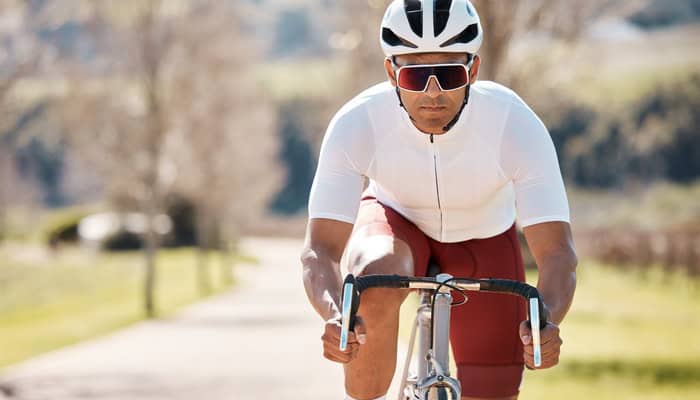Triathlons are difficult enough without having to worry about the right gear. In this guide, we’ll explain the priorities for triathlon gear so you have what matters most on race day, so you can focus your attention and energy on the competition.
Swim Gear: Mastering the Waters
Your relationship with water starts with proper goggles. Choose a pair that seals comfortably around your eyes without creating pressure points during longer swims. Anti-fog coating becomes essential during Pittsburgh’s humid summer months, and tinted lenses help when racing in bright morning conditions along the Allegheny or Monongahela rivers.
Swimsuit selection extends beyond comfort to performance. A well-fitted racing suit reduces drag and maintains its shape throughout the swim portion. For open water events in Pittsburgh’s rivers or lakes, consider a wetsuit during cooler months.
Bike Gear: Conquering Pittsburgh’s Hills
Pittsburgh’s hills are no joke, so your bike setup needs to be ready. You don’t need the most expensive bike, but make sure your gears can handle steep climbs like those found all over the city. A properly fitted helmet is non-negotiable for safety, and modern helmets also offer aerodynamic advantages for longer rides.
Pay close attention to your bike’s gearing system. Pittsburgh courses often have long, sustained climbs that demand lower gear ratios. To prepare, test your bike setup on local hills similar to those you’ll face on race day, such as the ones in Schenley Park or the South Side Slopes. This will verify that you and your bike are ready for the challenge.
Run Gear: Adapting to Pittsburgh Weather
Running shoes are your foundation. Pittsburgh’s unpredictable weather means they need good drainage and grip for both wet and dry conditions. For many triathlons, carbon plate shoes are worth the investment as they offer better cushioning and help with transition times.
Clothing layers are strategic. Lightweight, moisture-wicking fabrics are essential for humidity, but prepare for sudden weather shifts as well. Pittsburgh’s microclimates can cause significant temperature changes during longer races, so sun protection and adaptable gear are key when moving from shaded paths to open areas.
Transition Gear: Streamlining Your Race Flow
When it comes to triathlon priorities, transition gear can matter most on race day, as efficient transitions are key to saving valuable time. A race belt eliminates the hassle of safety pins and allows quick adjustments for number positioning between bike and run segments. Practice your setup to avoid wasting time searching for gear.
Small adjustments, like using elastic laces or alternative lacing systems, can significantly speed up the bike-to-run transition. These minor time savers add up throughout the race, reducing stress and helping you focus during critical moments.
Prepare Smart, Race Confident
Successful triathlon gear selection means balancing performance with Pittsburgh’s specific challenges, like elevation and variable weather. Choose gear that enhances your strengths and helps you tackle the city’s unique courses.
Always test your gear combinations during training sessions that mimic race conditions to validate your choices. Build your gear collection gradually, prioritizing items with the biggest performance impact.







